In Gregory Crewdson’s photographs, an enduring, haunted vision of American life
By now, the famed photographer Gregory Crewdson’s well-oiled, large-scale shoots are well documented. He has shut down areas of small towns and built soundstages of shadowy home interiors to get at what lays beneath the suburban facade, encapsulating a disquieting view of America. His weekslong productions include a full crew (and costs) comparable to small independent films, as well as a casting process to find subjects who have a particular sense of melancholy.
But for his earliest bodies of work, made in the late 1980s and early ’90s, Crewdson hacked it the best he could. As a student at Yale’s MFA photography program, he shot what he could find in homes in Connecticut and Western Massachusetts, directing families to act out scenes of creeping unease. He built uncanny table-top sets and tableaus of animals in nature akin to museum dioramas, using forced perspective to make them seem larger-than-life. For his formative images of small-town landscapes, he procured a tree surgeon’s crane to get high above the rooftops, and — dangerously — pirated electricity from homes to light scenes rather than rent generators.
“It was such a ragtag team,” Crewdson recalled in a video call with CNN. “It was a bit like the Wild West — we had very few permissions or permits. We were just out there improvising, and it felt so exciting.”
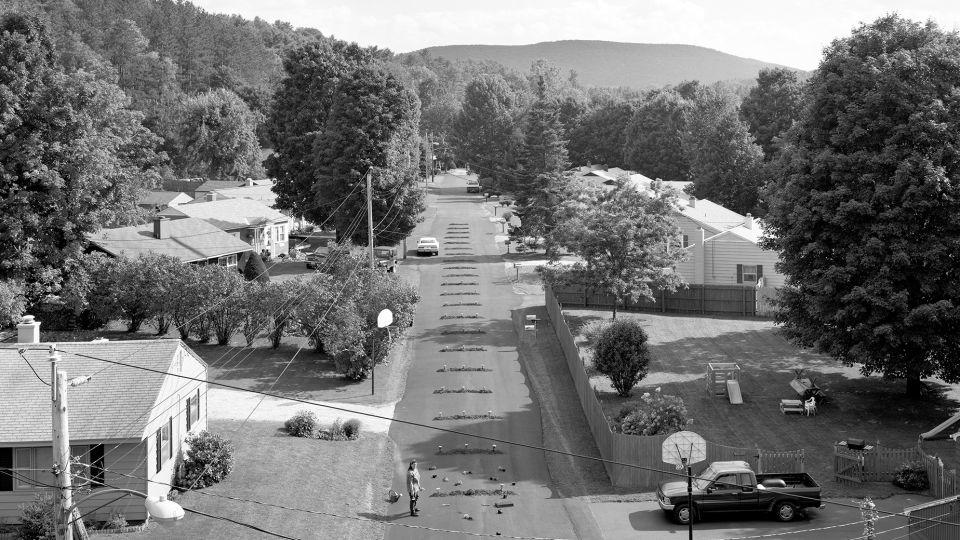
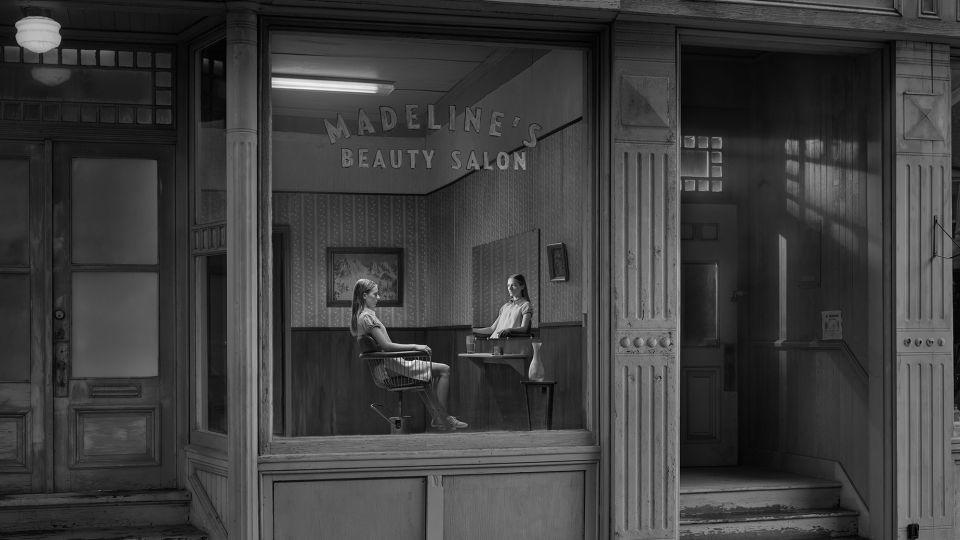
Three decades later, Crewdson is reflecting across all his work as a major retrospective opens at the Albertina museum in Vienna, showing all his series together (minus his commercial work) for the first time. Among them, the self-titled show brings together his grand, eight-year endeavor “Beneath the Roses” from the mid-2000s, his earlier low-budget black-and-white images of “Hover” from 1996, and his meditative return to photography after a difficult period of divorce and transition, “Cathedral of the Pines” in 2013. The show’s curator, Walter Moser, framed the exhibition and catalog around Crewdson’s long dialogue with cinema, including inspirations such as David Lynch, Steven Spielberg and Alfred Hitchcock.
“He really is quoting popular culture,” Moser said in a phone call with CNN. “It’s a visual language we all know… so we can connect to that. At the same time, his topics are very in the present.”
When Crewdson began his career, he was among a set of postmodernist photographers — including Jeff Wall, Cindy Sherman and Philip-Lorca diCorcia — who were concerned with the artificiality of photography, often blurring truth and fiction.
“They analyze how we perceive reality, and how reality is constructed in photography,” Moser said. With Crewdson’s work, he added: “It’s completely staged, and every detail is thought through. But at the same time, it’s also documentary in the sense that he’s really reflecting the state of society.”
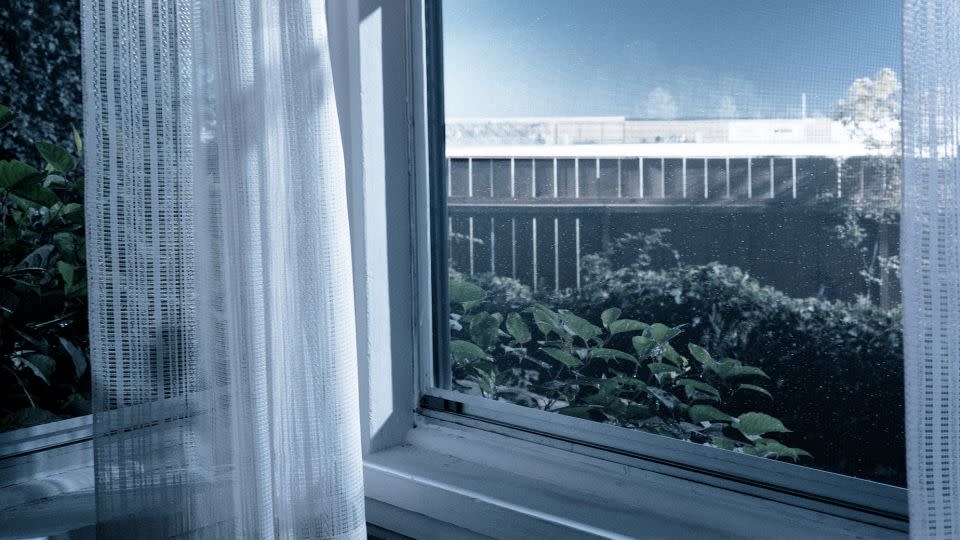
From the beginning, the now-familiar elements in his work were already present. Consider an image taken in the late ’80s made in Pittsfield, Massachusetts — a city he has continually returned to, including amid its industrial decline for 2018’s “An Eclipse of Moths.” In the cool glow of nighttime, he photographed the view of a lit baseball field outside of a bedroom window, gauzy curtains pushed back. The composition of mysterious lighting, nighttime stillness and window — motifs that he’s often returned to in the years since — clicked something into place, he said, a sense of something “there but not there” that he’s strived for ever sense. (The phrase is also the title of a 2017 documentary short directed by his studio manager and romantic partner, Juliane Hiam.)
“I remember taking it and knowing that it felt meaningful to me. There was something beautiful to me about looking through a window at something that’s slightly outside of reach,” Crewdson explained.
“When I look at the work I made when I was 25 or 26, it’s like — in a very early stage — it’s not that far from what I even did last week,” he added.
A ‘hyperreal’ environment
Desire and disconnection have served as the architectural foundations on which neighborhoods are built in Crewdson’s world, which he described as sitting “partially outside of reality.” His final images are composites of multiple frames, allowing for every area of the image to be sharp, making them appear “hyperreal,” as Moser described. Lost in thought or memory, the characters Crewdson places together rarely interact in these exaggerated environments. Instead, they are often confronted with strangeness cutting through the banality of the day in the form of a blinding spotlight, blazing fire or blood in the sink — a callback to Spielberg’s aliens lurking off-screen in “Close Encounters of the Third Kind,” or the found severed ear in Lynch’s “Blue Velvet.”
Artists such as Sherman, Edward Hopper and William Eggleston, who played a role in Crewdson’s take on the American psyche, are also all apparent. But by now, the photographer’s highly recognizable and inimitable style has helped shape the country’s image, too.
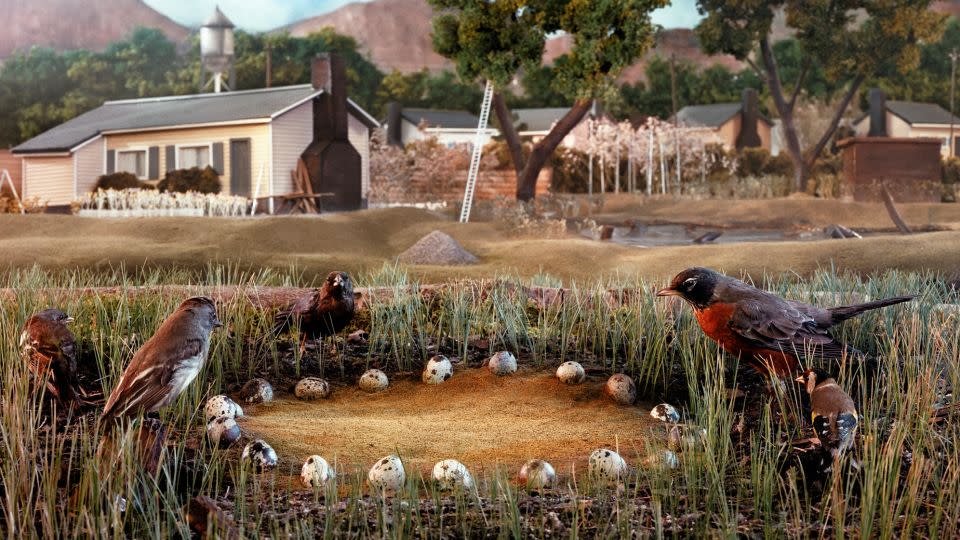

Some of his forays into pop culture were by his own hand, like when he teamed up with HBO’s “Six Feet Under” — another uncanny, iconic study of the American family — to shoot a verdant kitchen scene with the cast for the promotion of the show’s third season. Another, his lone editorial commission, “Dream House,” for the New York Times Magazine in 2002, cast A-List actors Julianne Moore, Tilda Swinton, Phillip Seymour Hoffman and Gwyneth Paltrow as nameless residents of a Vermont home, nearly obscuring their celebrity.
But his vision permeates elsewhere, too, through direct or presumed nods from other creatives: the eeriness of life in the small town of “Stranger Things,” or the surreal floral-laden bedroom scenes of Taylor Swift’s music video “Lavender Haze” (with the latter parallels spotted by Swifties on TikTok).
“That’s the way culture works; it’s like a two-way street,” Crewdson said of unexpected references to his work. “And sometimes it can be a little beguiling, but… you just have let that be part of the equation.”
Though Crewdson’s body of work spans societal shifts that have included political polarization, an epidemic of loneliness, suburban anxiety and rural decline, he refrains from making specific commentary — though he contends “it’s in the work.” He also avoids markers of place or time, switching out street signs or storefront text, and favoring non-distinct cars and clothing.
Nor is his view of America a particularly wide one, shot primarily in Massachusetts, as well as New York and Connecticut, in the areas where he’s lived, studied and taught his whole life. (Crewdson is now the director of the graduate program he attended at Yale in New Haven, and resides in the Berkshires). Over time, he’s revisited streets or buildings he’s previously photographed and recast some of the same characters, creating subtle narrative connections across his series.
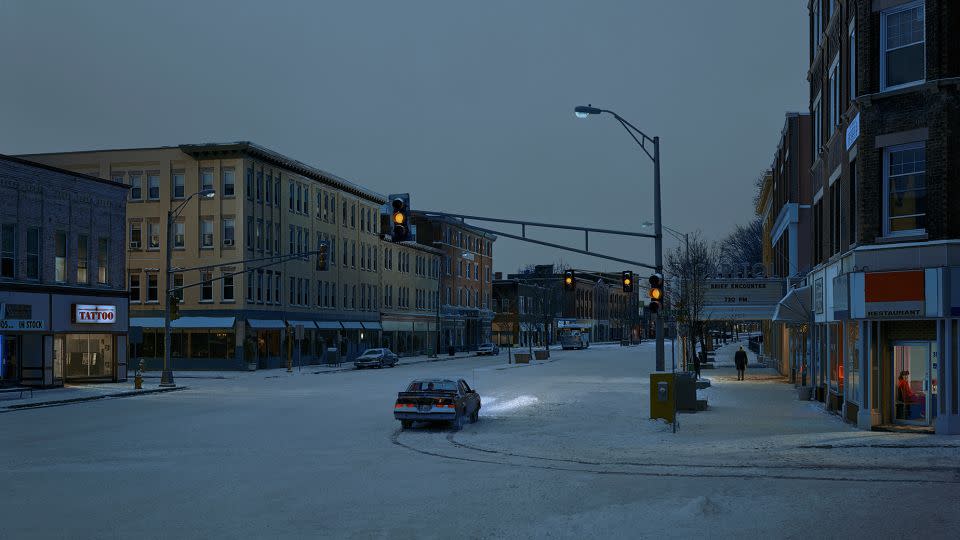
“There are photographers who chronicle the American landscape in a vast way — for me, it’s always been going back over and over again to the same towns,” he said.
“Part of that’s practical, because once you become a known figure in the town you can shut down streets and work with the fire department for wet downs,” he explained, referring to the method to drench a set for atmospheric or weather effects. “But the bigger part is psychological. I have a connection to this place in terms of an aesthetic response — it feels familiar to me.”
Chasing stillness
Even when Crewdson began his career, he knew his love for cinema would guide his work, though he has always stuck with teasing out the enigmatic narratives of still pictures rather than moving into film. But he didn’t foresee that his productions would eventually become so immense.
“It built slowly and organically, until all of the sudden you realize, ‘This is kind of crazy, all these people,’” he said. “But you have to block all that out and think about the picture in the end.”
He hasn’t been behind the camera himself since ‘Hover’ in the 1990s; Instead, his longtime director of photography, Rick Sands, has that honor, while Crewdson prefers to have the scene come together in front of his eyes.

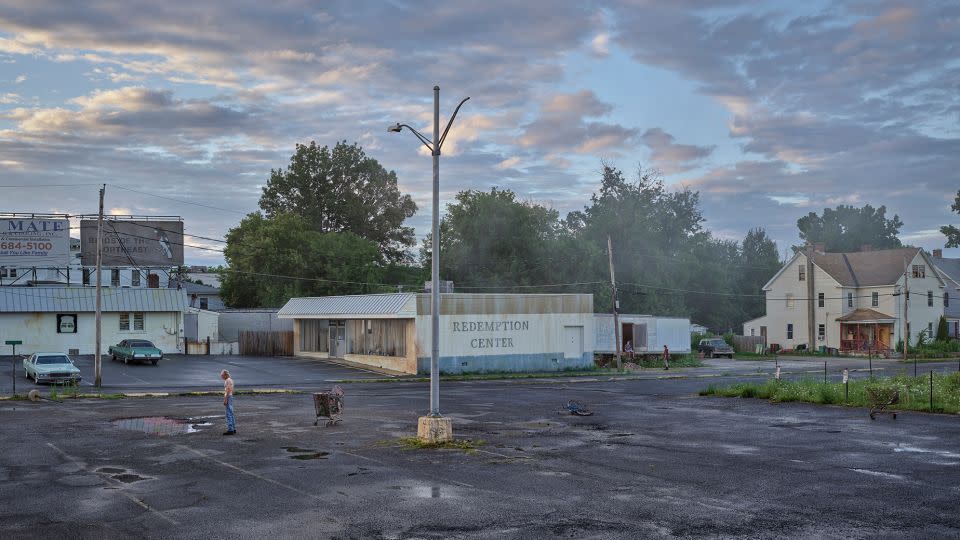
“This might sound disingenuous, but it’s the only way I really know how to make a picture now,” he said. “It’s how I’ve figured out how to reflect what I see in my head.”
In the 2017 documentary short “There But Not There,” he describes the tranquility that occurs as the chaos of production comes together into that “elusive” moment “when the picture actually works,” he said. It’s that moment — not the final picture — that he’s always chasing, he reiterated on the call. It doesn’t always come easily, though; in a recent shoot, it happened, “but barely,” he added with a laugh.
Crewdson acknowledges that many of the themes he’s returned to repeatedly, including the sense of being both “present yet absent,” are reflections of himself. His desire for a moment of stillness has wider implications in his own life.
“We live our lives in like partial chaos. There are so many things that are destabilizing in life, and I have a lot of anxiety day to day — that’s just a condition of being alive,” he said. “I think part of why we are drawn to art in general is to feel a certain sense of order or meaning. Even though my pictures can feel dystopic or sad, there’s that moment where everything just comes together, and it feels like it makes sense.”
For more CNN news and newsletters create an account at CNN.com


